Purchased for $6.85 million in October of 2016, the modern 4,665-square-foot home at 50 Oakwood Street in the Mission returned to the market priced at $8.35 million this past April, a sale at which would have represented total appreciation of 21.9 percent over the past 4.5 years or just 4.5 percent per year.
Designed by Stanley Saitowitz, the four-level home features floor-to-ceiling walls of glass; a 550-square-foot living room with a 16-foot-long gas fireplace; a 15-foot-long island and custom hidden-wall cabinetry in the kitchen; “up to five bedrooms” and four and a half baths; and multiple terraces overlooking its hardscaped rear yard and the Mission.
And having been reduced to $7.85 million after a month on the market, the sale of the modern Mission District home has now escrow with a contract price of $7.3 million, which was a million under its original list but up 6.6 percent from the fourth quarter of 2016 on an apples-to-apples basis.
The widely misunderstood index for “San Francisco” single-family home values, which is up 15.1 percent on a year-over-year basis, was up 38.2 percent over the same period of time.
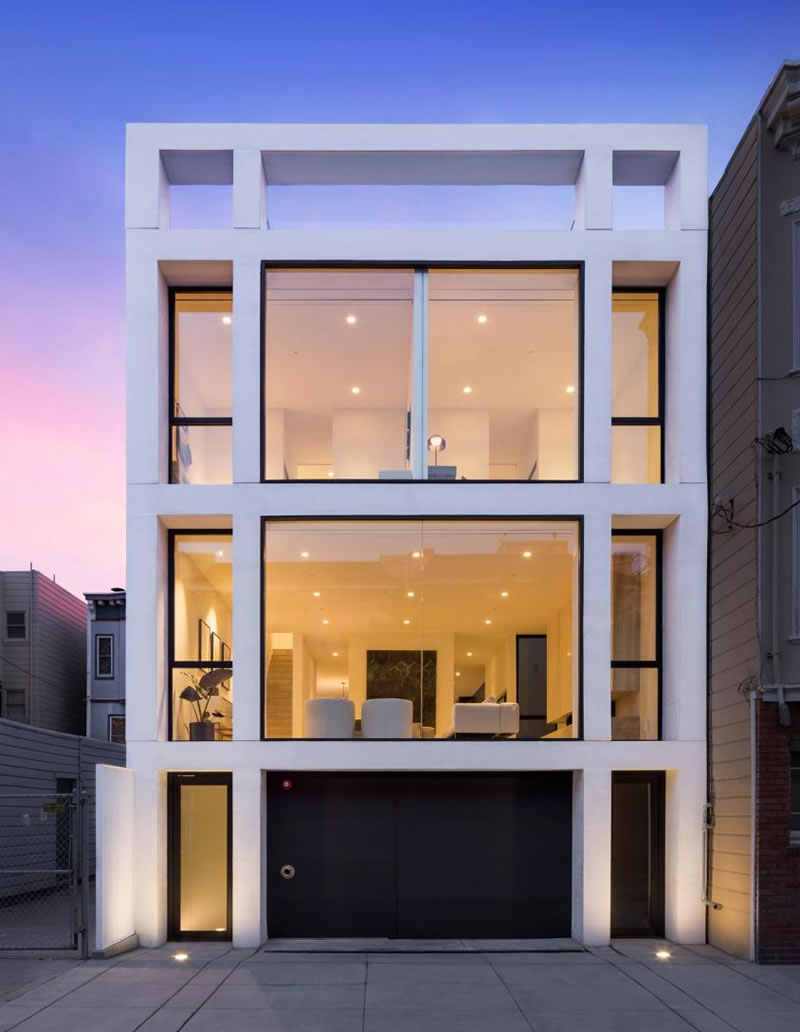
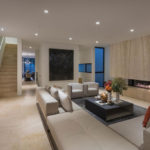
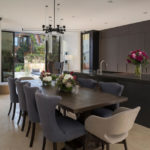

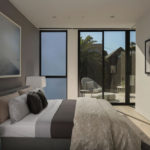

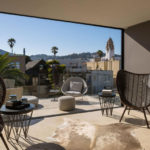

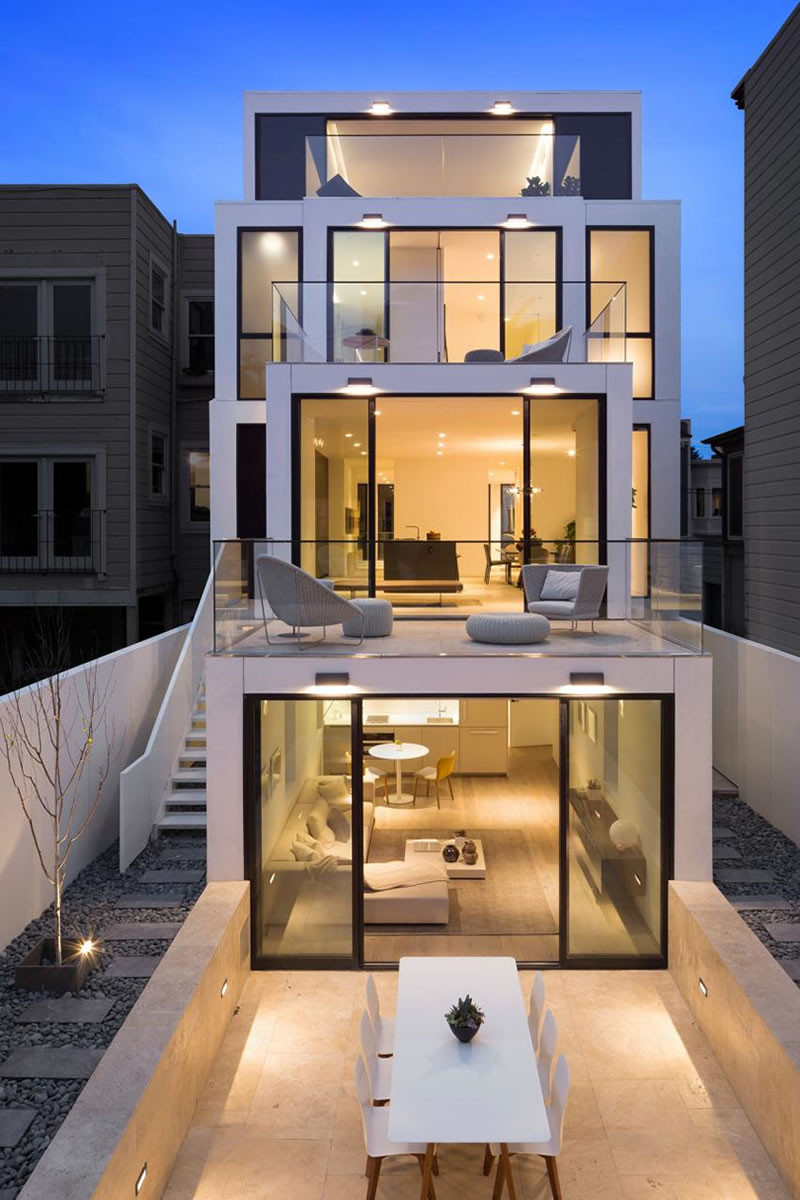
Les trop grandes fenêtres… mon dieu !!!
Actually, as a piece of pure architecture I rather like it: symmetry, clean lines, simple colors (really “no colors” unless you include white, black and ‘clear’). But how I’d hate to (try to) live there !! No warmth whatsoever.
You know that once you buy the place you can paint it, right? I think an orange coral accent wall would go nicely in the downstairs living area, and sparing use of neutral blue-grays elsewhere would provide a good backdrop for hanging more colorful artwork.
Yes of course: you can paint the walls, put in shag carpeting and strew empty beers cans around to give it a ‘lived-in’ look; but the issues extend beyond the superficial things you can change readily to the materials, the type of lighting, the size of the windows….and even – or particularly – to the ‘boxiness’ of the design.
But note I said “issues” rather than “problems”:, because, as noted, I think it’s a magnificent example of Miesian wish-fulfillment; it would make a great lobby for an ad agency or set for a Hitchcock remake. I just wouldn’t want to live there. Someone will. Hopefully someone with lots of money and little photophobia.
Yeah, my first reaction flipping thru the photos was – claustrophobic. And that’s despite the windows; it just seems like there’s a lot of walls walls walls, including around the outdoor area … everything fenced and walled off…
With regard to the furnishings and ‘lived-in’ look…from 12 Expensive Decorating Mistakes Designers Won’t Make Again, mistake number 7, Buying White or Pale Upholstered Furniture:
Of course, the photos above are probably of the stager’s choices and the furnishings will disappear before the new owners begin to move in, but this is still good advice for folks seeing these pictures and getting the misplaced inspiration to duplicate them in their own home.
I oft appreciate the work of Saitowitz, especially the interiors, but just a few thoughts for a Saturday morning, while indeed the staging probably is not his hand. Personally I go back n forth between loving pales and loving colors. I did live with (relatively happily) a white 50’s sectional love seat for….15 years (had to recover cushion after 7). I feel the pales can add to a serene pleasing look, but if no color helps if a view of something choice, and or some tony materials, etc.
I’m not wild about black window mullions and I notice most architects love them; they visually create a boundary between indoors and out (white mullions the opposite: flow), and they stand out, forever. Too, I feel the fireplace wall is overbearing and colossal, although I notice peeps in places like Palm Springs would go ahead and top with art. Nor am I a fan, personally of black kitchens.. Call me old fashioned but who’d want to cook in there? At least the all white ones can be dressed up/down/sideways at the whim of whomever, but a black kitchen? It’s just not my thing. While I’m on a rant nor do I get branch chandeliers. they’re just not that attractive; fine for a bachelor pad in the Hollywood Hills (especially if one can move like Jagger) but otherwise…….eek gads. I know everybody’s doing it and they’re all over town but i can’t imagine paying for one of those even wholesale.
I guess that four-foot setback was mandated by the city? What a dumb move. I suppose it’s because the neighbor is set way back, but it doesn’t actually benefit anyone, and only encourages the resident to park their car on the sidewalk.
Really? Set backs bad? Hmm. If our Planning Dept. allowed an extra 2 or even 3 ft extra height for each ft of setback i’d be down with that.
Yes, four-foot setbacks on a street with lot-line buildings is bad. Perhaps the goal is to have nice sixteen-foot setback in the year 2847…
Not everyone needs their house to scream personality or some message at them constantly.
Some wall art and maybe a little sculptural art would give more personality but again, house is to be lived in. If I wanted to be constantly entertained and reminded of political messages, it would get annoying pretty quick.
Try playing music in your house 24/7 and see how quickly it gets old. Silence can be golden too, someone once said.
Which floor for ladies jewelry?
OK so there’s is a lot wrong with this house relative to what the Mission is about (a place where young people can go out, eat, have a few beers and not have to rob a bank to do it). But right now if the “keep the mission dumpy so we can buy up all the real estate” people posing as “the only ones worthy whereas the rest of us are the unwashed” crowd is triggered by this then it’s worth every penny.
“[…] what the Mission is about (a place where young people can go out, eat, have a few beers and not have to rob a bank to do it).”
Your tin ears might not be able to discern this, but your snide “keep the mission dumpy” crack is the thinnest of veiled racism.
The Mission is “about” working class, largely immigrant latino families trying to survive a racist, gentrification class war waged on them by largely white, upper middle class used house salesmen who are too sleazy even for the used car racket to abide.
Gentrification = racism.
I bought my house in the mission from a Latino family, which had owned it for about 25 years. Based on public records showing their purchase price, they made just over a million dollars, which, as they were happy to tell me, they used to buy a place in Sonoma County where they could retire. Are they racist for selling to white people? Am I racist for buying it at the market price and giving them all this money that they could use to retire?
The family exploited a pernicious system to their advantage. Good for them. Not so good for their former neighbors who were subsequently evicted so another gold-digging carpetbagger could get rich quick.
You exploited a pernicious system to your advantage. Good for you.
How on God’s Green Earth is paying the market price for something exploiting a pernicious system?
Once the Revolution occurs, Chief Propaganda Minister and Ethnic Appropriateness Cadre Dos Cervezas will ensure that only the proper people can move to the Mission. The Party has a classification system (they borrowed it from the Hindu Caste System) and there is an EAGER, no FERVID bureaucracy of ideological warriors ready to enforce the Cultural Revolution. One does wonder about the ideological faux pas of someone having TWO beers when there are so many who lack entirely access to the golden, frothy beverage. I think it is time for a self criticism session.
This block is not the inner Mission – it’s where the wealthier homeowners live. A block from Bi-Rite, Dolores Park, etc. This house actually looks great from the curb IMO.
Being an Inner Mission home owner for 20 years now, I don’t think the Mission is “about” either of these scenarios (young people vs. working class). It’s simply a culturally rich, diverse and lively neighborhood that gets visited by a ton of tourists as well invaded every now and then (like this coming weekend) by jerks who come in from somewhere else and tag and do side shows and set off fireworks, etc.
Gentrification happens due to lack of adequate housing supply at all levels — pure and simple. There is overwhelming evidence that even just building “yuppie fishtanks” helps to stabilize nearby housing costs. That’s not to say that market rate housing is the only thing that should be built though. If people want to prevent displacement, then let more housing be built at all levels. That’s the only solution. The usually well-meaning, but extremely misguided type of left-NIMBYism that prevents housing from being built is the primary cause of gentrification and in this case the displacement of a disproportionate number of minorities that they are claiming to try and protect.
And where is all this housing supposed to go? The city seems fairly full of houses to me.
Two options:
– build up
– build elsewhere (other Bay Area cities have more infill opportunities)
Au contraire. The City is chock full of infill opportunities, not to mention the huge amount of brownfield space in Dogpatch, Hunters Point, etc. And still lots to add to SOMA, Mission Bay, …
I’d have to look up the details, but my recollection that fairly large areas have been mapped out for development and plans are in process by the investors to build housing on the land. Apparently the people who are putting up actual money are going to build up the areas over many years. What do these investors know about demand for housing in SF if they don’t consider immediately filling the land with housing as quickly as possible?
“– build up”
As you well know, building taller gets exponentially, not geometrically, more expensive to build as floors are added. Zoning for taller also increases property value, hence land acquisition costs are higher. So, unless the housing is subsidized, only high-end housing makes sense for developers. As you well know.
While it is true that construction costs are higher for taller buildings, that’s not the only factor in a project’s cost. The other big factor is land cost which is amortized across the total floorspace of a building. So it is quite possible that given two identical parcels, a multistory building might be cheaper per unit than a single story.
Rule # of economics: anyone who says supply & demand is “pure and simple” doesn’t know the first thing about economics.
The simplistic S&D model you learned in your Econ 1 for Dummies comic book doesn’t work with speculative assets (and real estate violates numerous other conditions that must obtain for S&D to function as it does your textbook vacuum).
Gentrification is caused by speculation fostered by cheap money. The cheapest properties to “upgrade” or “improve” (insert racist dogwhistle codeword here) are in lower income neighborhoods, which means largely minority working-class families.
You can’t build your way out of an asset bubble, whether it’s yuppie fishtanks, pizza delivery app stocks, or digital currency tulips. In asset bubbles, additional supply puts upward pressure on prices. As long as prices keep going up, it increases the asset holders’ ability to borrow and buy even more, at even higher prices, and more clowns are induced to jump in, sending prices even higher. Bubbles only end when the conditions and sentiments fueling the mania ends.
There is enough housing in SF for organic buyers, but prices are out of reach because of inorganic speculation that can never be satisfied until the bubble finally deflates.
Thousands of vacant yet still-exorbitantly priced units across SOMA and Mission Bay say that enough housing has been built, just not the kind that is affordable or usable for the people who still want to live here.
If you want to learn actual economics, and not just regurgitate unscientific cliches and tautologies, you should forget everything you learned in Econ 1, and start reading Minsky and Veblen.
How do you define an “organic” vs “inorganic” buyer? As far I can tell, the vast vast majority of homes in SF are purchased by people who just want to live in them (or rent them out as an investment), not “speculators”.
Real estate prices move at the margins, as our local used property salespeople like to say. It doesn’t take much to skew prices up, especially in an asset bubble fueled by cheap money and no productive outlets for investment that can compete with the returns the bubble assets are showing. A recent article said that private equity has been paying cash for about 15% of recent national home purchases (to hoard for rentals), but “only” about 5% locally (I’m dubious it;s that low, but still..). Add flippers, money launderers, and 2nd/3rd home buyers, vacation/AirBnB rentals (buy ’em now when they’re cheap, amirite!!), and you’re probably over 10% of local sales. Add cash bidders, and the vast, vast, vast, vast majority of organic buyers are overpaying by a vast, vast, vast, vast amount. No inspection contingencies? Sure, why not!
@two beers
New to SF I see. The Mission was mostly Irish with some Italian, Slavics etc for generations before the large influx of hispanics starting in the mid / late 1960’s. Even in the 1980’s most of the older residents were still working class whites. Just like they were in places like the Sunset. As was large parts of Noe Valley for that matter.
So the rise and fall of the hispanic population in the Mission was pretty much like that of blacks in places like the Western Addition / Lower Haight etc. Came and went in about two generations.
So the actual population progression in the Mission has been mostly working class whites, starting in the 1860’s/70’s, replaced by working class hispanics about 100 years later and now replaced by affluent whites and asians starting about 20 years ago.
The only “racists” are those who throw that term around as a lazy slur. Who never seem to be from San Francisco in the first place and never know any of its history. You know, anything that happened before the 1990’s.
As for the house. An ugly piece of architectural affectation that should be somewhere like Alamo or Los Altos Hills. Where all the nouveau riche with no taste live. It will not age gracefully and will look tired and dated in a decade or so.
Ah, the old “but the Irish & Italians were here first” canard! “Change is inevitable, beyond our control, and always good!”
No one evicted the Irish and Italians, or raised their rents so high they had to live three families in a flat or move.
No, the Irish and Italians weren’t displaced. They moved, willingly, en masse, to the Sunset and Peninsula to escape the mid-century influx of Latino immigrants to the Mission.
There’s a big difference between moving because you think your new neighbors are destroying your property values and moving because you’ve been evicted or can’t afford the new rent.
Are you sure the Irish and Italians didn’t exploit a pernicious system to their advantage?
When you have lived in SF another couple of decades you will start seeing the pattern. Might also help if you knew even a little of its development and settlement history. Going back to Dona Briones. Who got the ball rolling.
The original displacement in the Mission happened mostly the old fashioned way. Just like it did in the Sunset from the 1970’s to early 2000’s when it went from its original working class white to majority Asian. The most common cause of transfer in the Sunset was when the current white owners (all older) died and their heirs decided to sell up. The purchaser was usually Asian. This process was accelerated by the removal of the young family pool of potential purchasers (mostly white) who left the city due to the terrible public schools starting in the 1970’s. A pattern repeated across the City at the time.
The one big difference between the Mission and the Sunset in the last 60 years was due to the three public housing projects in the Mission there were pockets of true white flight in the surrounding streets when those projects went from mostly white to overwhelming black between the mid 1950’s and late 1960’s. By the 1980’s the only parts of the Mission that were completely Hispanic were around the VG, Army St projects and Potrero Ave projects. Because rents and property prices had completely collapsed in those area in the previous twenty years. That was the Mission I first got to know personally. Back in the 1980’s
Large parts of the Mission remained mostly a dead zone often quite dangerous until the projects were rebuilt in the mid 1990’s and the less than 10% of pubic housing residents who caused all the problems were packed off to the East Bay. And Three Strikes took care of the gangs. So it was not surprising that rents and property prices that had been previously depressed by areas being dangerous / high crime went up back to their historical norms.
A very different story from your very much politically motivated narrative. The gentrifiers as people maybe mostly unpleasant. When walking around the quieter streets in the Mission you get to learn there is no point making causal conversation with them. Unlike the long tern residents and locals who will always stop for a chat or just a friendly word and a smile. The gentrifiers always seem to be deeply suspicious suburbanites who will never understand that San Francisco is actually a very friendly small town. If you are a local or have been accepted as one. To get accepted as a local you just have to learn some of its real history and actually care about its future. And live here for a few decades to get a feel for the place.
Repeating some simplistic political narrative immediately marks you out as not “one of us”. The real story is much more complex. And subtle. Like so much of the history of San Francisco.
It wasn’t 3 strikes. It was the gang injunction that “took care” of the gangs.
Another case of a home purchased brand new subsequently underperforming the broader market.
As has been the case for “used” homes in San Francisco as well.
Call the curtain guy. Not all of us want to live in a fish bowl.
Meh, it’s in the Mission…